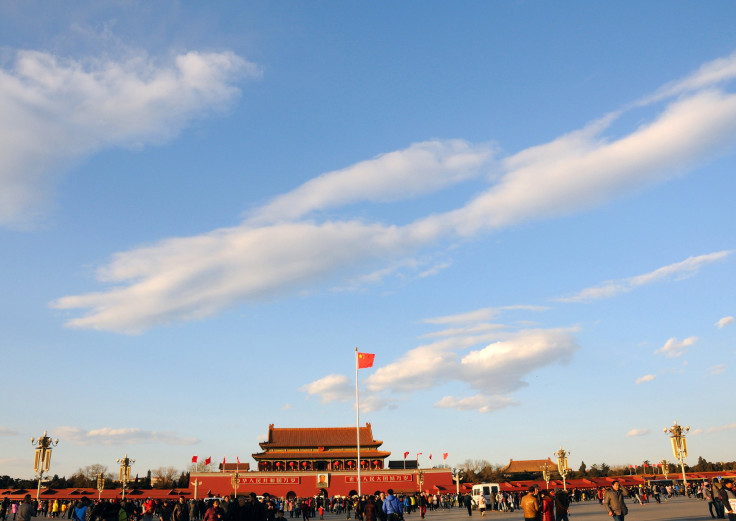China’s Banks Issued Record $385B In New Loans In January To Boost Economy, But Bad Loans Hit 10-Year High

SHANGHAI — China’s banks issued a record amount of new loans in January — in a sign that looser monetary policy may be having some impact in combating the slowdown in the nation’s economic growth. Yet concerns have also been raised at the rapid growth in the country’s bad loans, which rose to their highest level since 2006 at the end of last year.
New bank loans traditionally peak in China in January, ahead of the Lunar New Year. However, last month’s total of 2.51 trillion yuan (around $385 billion) was more than 60 percent up on the previous January’s 1.47 trillion yuan, and almost a third higher than the previous record set some seven years ago in the early months of the global financial crisis.
Growth in monetary supply also expanded to its highest level in 19 months in January: it grew 14 percent, compared to a 13.3 percent rise in December, in what analysts said was further evidence of official attempts to stimulate an economy that saw GDP growth fall to 6.9 percent last year, its slowest rate in a quarter century. China’s central bank pumped some 1.53 trillion yuan in liquidity into the economy in the second half of last month, in part to help reassure a nervous stock market, which lost more than 20 percent of its value in January. The move was also seen as aimed at providing sufficient liquidity for last week’s New Year holiday, when businesses traditionally need cash for end of year payments and families spend heavily on celebrating. And observers have said the central bank’s action was also designed to stave off pressure to make policy moves, including further cutting interest rates or reducing the reserve requirement ratio (RRR) for banks, for fear of undermining the value of China’s currency the yuan, which fell sharply in early January (though it has now recovered significantly over recent weeks as the U.S. dollar has weakened).
Analysts at ANZ Bank said some new loans could be the result of Chinese companies seeking to pay off dollar-denominated loans after U.S. interest rates rose in December. Nevertheless, the rise in bank loans may also reflect the impact of a series of cuts in both interest rates and the RRR over the past 15 months. Some analysts say China’s lending rates are still too high, and deter borrowing by small and medium enterprises. But the rate cuts, along with measures to stimulate the housing market, appear to have led to rising demand for housing loans, which grew 21 percent year-on-year in December. The Chinese government has also pushed for swift implementation of a range of infrastructure projects to help boost the economy — and is encouraging the involvement of private capital in such projects through public private partnerships.
In this sense, the record lending is being seen as a positive sign by economists, who have been concerned that the slowdown in demand for China’s factory output is making companies less willing to borrow money to upgrade their products and become more competitive.
But the spike in lending comes as latest data shows that Chinese banks’ non-performing loans (NPLs) have hit their highest level since 2006. The China Banking Regulatory Commission said Monday that NPLs accounted for some 1.67 percent of banks’ total loans by the end of 2015, compared to 1.25 percent a year earlier. “Special Mention” loans — those not yet classified as non-performing but seen as high-risk — also rose to their highest level since records began two years ago, accounting for a further 3.79 percent of Chinese banks’ total loans.
Non-performing loans totaled 1.27 trillion yuan ($195 billion), amounting to some three-quarters of the 1.59 trillion yuan profits made by Chinese banks last year. And Chinese banks’ net profits growth of 2.43 percent was the weakest since 2011, according to Bloomberg News.
Leading U.S. hedge fund boss Kyle Bass, of Hayman Capital Management, who predicted the U.S. subprime collapse, warned last week that China faced a huge problem from bad loans, and that the continuing expansion of credit could lead to “significant” losses — up to four times those in the U.S. in 2008 — “that will require the recapitalization of Chinese banks” and would, he said, put pressure on the value of the already fragile yuan.
Other analysts have said Bass’ figures are exaggerated. Nevertheless, analysts at leading Chinese investment bank China International Capital Corporation said the true level of bad debt in the banking system could be more than 8.1 percent, some five times higher than the official figure. And fears remain that loans from China's state-owned commercial banks often go to unwieldy state enterprises rather than more dynamic private firms.
But some analysts, including Nicholas Lardy of the Peterson Institute for International Economists, and Matthews Asia economist Andy Rothman, say loans are reaching China’s private businesses more effectively than in the past.
And some analysts still predict that China will eventually have no choice but to further ease monetary policy this year to maintain growth at the level of 6.5 percent to 7 percent the government has said it wants to achieve. ANZ Bank's Greater China economists Li-Gang Liu and Louis Lam said in a note sent to International Business Times that they expect a further reduction in the RRR of 50 basis points this year.
© Copyright IBTimes 2025. All rights reserved.






















